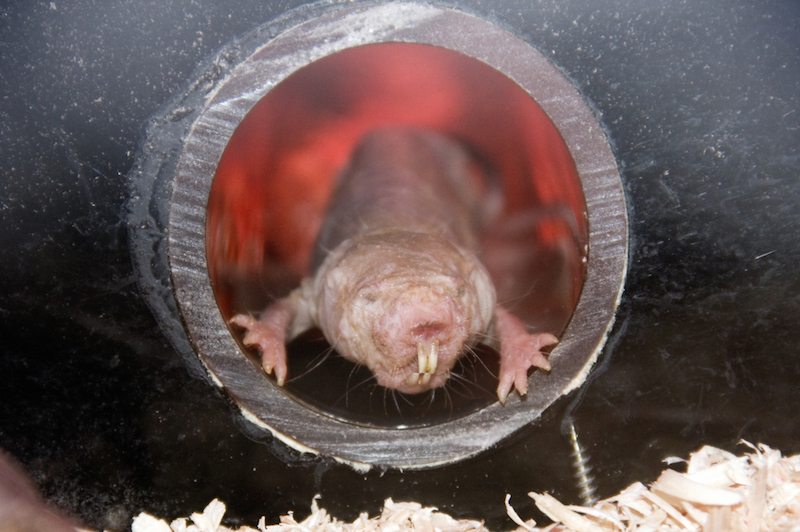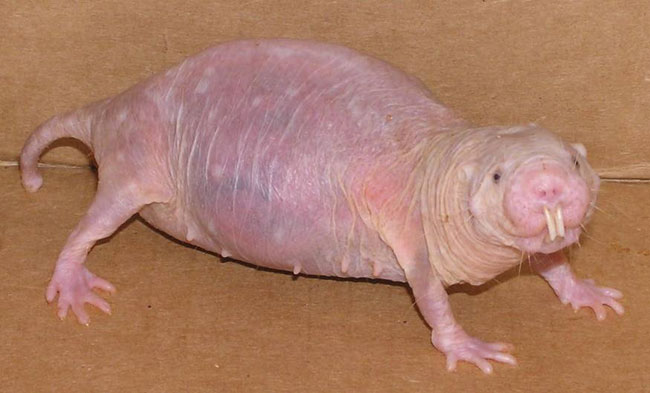1st Case of Cancer in Naked Mole Rats Confirmed

Naked mole rats are renowned for their ability to live cancer-free, even when researchers try to induce the disease artificially.
Not anymore.
For the first time on record, researchers have diagnosed two naked mole rats (Heterocephalus glaber) with cancer. [Top 10 Cancer-Fighting Foods]
"These cases represent the first formal reports of cancer in the naked mole rat, a rodent species best known for its extreme longevity and apparent resilience to typical health-span-limiting diseases, including cancer," the researchers wrote in the report, published online today (Feb. 17) in the journal Veterinary Pathology.
The finding isn't completely out of the blue. The researchers had previously followed a zoo-housed naked mole rat colony for 10 years, and found that some of the animals had precancerous lesions. But the new finding is still the first report of full-blown cancer in the critters, the researchers said.
In the first case, a 22-year-old male naked mole rat at the Brookfield Zoo in Chicago developed a mass on its upper right chest. The purple and red mass measured 0.6 inches (1.5 centimeters) in diameter. Researchers removed and studied the mass, and reported that it looked like an adenocarcinoma — a malignant tumor that likely started in the animal's mammary or salivary gland.

The animal survived the surgery and returned to its colony soon afterward. The researchers checked on it three months later, and said the animal had some scar tissue from the operation "but no clinical signs or recurrence of the mass."
Sign up for the Live Science daily newsletter now
Get the world’s most fascinating discoveries delivered straight to your inbox.
The second naked mole rat wasn't as lucky. In this case, veterinarians humanely euthanized a 20-year-old male after it experienced a severe rash on its face and progressive weight loss at the National Zoo in Washington, D.C.
During the necropsy (an animal autopsy), researchers found a dense mass in the naked mole rat's stomach. An analysis of the mass indicated that it was a neuroendocrine carcinoma, a cancer of the hormonal and nervous systems.
"The gastric neuroendocrine carcinoma likely contributed to the naked mole rat's inability to maintain body weight, which was a primary reason for euthanasia," the researchers wrote in the study.
The findings may give pause to some researchers who study aging and anti-cancer mechanisms in naked mole rats. These rodents can live up to 30 years, about nine times longer than mice of the same size. But, if anything, these two reports show how rare cancer incidence is in naked mole rats, the researchers said.
They advise their colleagues to continue monitoring naked mole rats for cancer, but still laud the rodent as a "valuable animal model" for human disease.
Naked mole rats aren't the only animals with few cancer cases. Elephants rarely get the disease, likely because they have multiple copies of a gene that suppresses tumor growth. But other animals, including the Tasmanian devil, get cancer just like people do.
Follow Laura Geggel on Twitter @LauraGeggel. Follow Live Science @livescience, Facebook & Google+. Original article on Live Science.

Laura is the archaeology and Life's Little Mysteries editor at Live Science. She also reports on general science, including paleontology. Her work has appeared in The New York Times, Scholastic, Popular Science and Spectrum, a site on autism research. She has won multiple awards from the Society of Professional Journalists and the Washington Newspaper Publishers Association for her reporting at a weekly newspaper near Seattle. Laura holds a bachelor's degree in English literature and psychology from Washington University in St. Louis and a master's degree in science writing from NYU.










